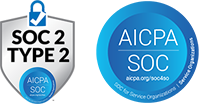What Is Human Resource Management?
Human Resource Management (HRM) is the coordinated set of policies, processes, and analytics an organization uses to attract, develop, pay, protect, and retain its people. It spans the full employee lifecycle—workforce planning, recruiting, onboarding, learning, performance, compensation, engagement, and exit—ensuring the right talent is in the right role at the right cost, and that every decision is fair, compliant, and data-backed.
Why Human Resource Management Matters
HRM turns people strategy into business results. When HRM is mature and insight-driven, organizations:
- Fill roles faster with better-fit candidates.
- Lift productivity through targeted development and smart org design.
- Reduce risk via consistent policies and compliance monitoring.
- Control costs with optimized compensation and workforce planning.
- Improve retention and culture by listening to employees and acting on evidence—not gut feel.
Where Human Resource Management Is Used
- Growth Stage Companies: Building scalable hiring and onboarding engines.
- Enterprises: Standardizing global policies while respecting local laws.
- Unionized Environments: Managing contracts, grievances, and negotiations.
- Highly Regulated Sectors (Healthcare, Finance): Tracking credentials, overtime, leave, and audit trails.
- Hybrid/Distributed Teams: Harmonizing experience, performance, and compliance across locations and time zones.
Human Resource Management Key Benefits
- Strategic Alignment: HRM ties talent plans to revenue goals and capacity forecasts.
- Data Transparency: Dashboards expose trends in headcount, attrition, pay equity, and skills.
- Operational Efficiency: Self-service, automated workflows, and clear playbooks cut admin time.
- Fairness & Compliance: Consistent, documented processes reduce legal exposure.
- Employee Experience: Thoughtful policies and growth paths drive engagement and advocacy.
The 7 Main Functions of HR (Common U.S. Model)
- Workforce Planning & Talent Acquisition – Forecasting needs, sourcing, interviewing, and hiring.
- Onboarding & Development – Orienting new hires, training, and continuous learning.
- Performance Management – Goals, feedback cycles, evaluations, and coaching.
- Compensation & Benefits – Pay structures, incentives, health plans, retirement programs.
- Employee Relations & Engagement – Conflict resolution, surveys, culture initiatives.
- Compliance & Risk Management – Labor law adherence, policies, safety, investigations.
- HR Analytics & Technology – Metrics, dashboards, and systems that guide decisions.
The 5 Main Areas of HRM (Condensed Lens)
- Talent Acquisition
- Learning & Development
- Total Rewards (Comp & Benefits)
- Employee Relations/Experience
- HR Operations & Analytics
Best Practices & Examples
- Skills-Based Workforce Planning: Replace headcount-only plans with skill gap analyses and internal marketplaces.
- People Analytics Integration: Consolidate HRIS, ATS, LMS, and payroll data to monitor KPIs (turnover, pay gaps, time-to-fill) and trigger interventions.
- Manager Enablement: Toolkits for coaching, feedback, and policy navigation reduce ER case volume by double digits.
- Self-Service & Automation: ESS portals cut ticket volume; automated workflows speed PTO, approvals, and document management.
- Continuous Listening: Pulse surveys and sentiment analysis reveal friction points early, guiding targeted fixes.
Conclusion
Human Resource Management is the operating system for your workforce. Done well, it’s proactive, tech-enabled, and analytics-led—aligning talent moves with business strategy, protecting the organization, and elevating employee experience. With real-time insight and consistent processes, HRM becomes a growth engine rather than a back-office cost center.
Human Resource Management FAQs
Q: What do you mean by human resource management?
Human Resource Management is the structured approach to recruiting, developing, compensating, engaging, and protecting employees—using policies, technology, and data to maximize workforce performance and compliance.
Q: What are the 7 main functions of HR?
The seven functions commonly cited are: Workforce Planning & Recruiting; Onboarding & Development; Performance Management; Compensation & Benefits; Employee Relations/Engagement; Compliance & Risk; HR Analytics & Technology.
Q: What are the 5 main areas of HRM?
Five core areas are Talent Acquisition, Learning & Development, Total Rewards, Employee Relations/Experience, and HR Operations & Analytics—covering the full employee lifecycle at a strategic level.
Q: What are the 7 HR basics?
Often referenced basics include: Hiring, Training, Performance, Compensation, Safety/Compliance, Employee Relations, and HR Data/Systems—foundational blocks every HR team must manage consistently.




